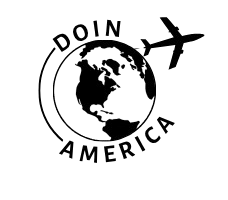Bahamas Business Automation: Easy Digital Workflows That Save Hours
Funny thing is, until about five years ago, most Bahamian businesses I knew still ran on handwritten invoices, Excel sheets hidden in tucked-away folders, and a pretty patchwork process that made every Friday look like a mad dash for “paperwork” survival. If you’re nodding, you’re not alone. Even after several rounds of government-led “digital readiness” seminars in Nassau, the practical gap—getting from local tradition to real automation—often felt more like a leap. Having spent the last decade helping Bahamian teams and small firms streamline their everyday tasks, I’ve learned that genuine workflow automation isn’t about expensive software; it’s about using simple digital tools in smarter, genuinely practical ways. Let me show you what I mean.
Local Business Digital Realities
What really strikes me about The Bahamas—beyond the sun, the sea, and our world-famous hospitality—is how resourceful our business community can be, even when digital infrastructure lags behind. For years, small businesses here have relied on close-knit relationships, local vendors, and in-person meetings. COVID-19 cracked open the conversation for digital solutions, but it still left many wondering: Can “automation” be genuinely simple and affordable, especially for local shops and service providers 1?
Here’s an honest confession: I used to believe automation meant complicated IT setups—until I watched a bakery owner in Marsh Harbour run her entire process using nothing but Google Sheets, WhatsApp, and a dash of creative problem solving. It wasn’t Silicon Valley chic, but it was practical. Since then, the best business processes I’ve seen in The Bahamas are built on easy digital tools, not huge platforms.
Why Automation Matters for Bahamian Businesses
- Frees up your time: The biggest trap I see? Owners working “in” their business instead of “on” it—wrestling payroll, chasing invoices, lost in admin.
- Reduces Errors: Manual entry, phone order confusion, missed bookings—digital workflows slash everyday mistakes 2.
- Improves Customer Service: Automated responses, scheduled reminders, and e-payments make clients happier and speed up repeat business.
- Cuts Costs: Fewer paper receipts, lower staffing needed for “busy work,” less overtime sorting files.
- Boosts Growth: When your team isn’t stuck with manual admin, you actually have space to chase new sales, partnerships, and expansion.
I’m partial to this “work smarter” approach because, frankly, the alternative is exhausting. Years ago, after implementing a simple automated billing process for a downtown Nassau realtor, I saw their admin hours drop by 70% within three months—a result I still find pretty impressive 3. The trick? Keeping things stupidly simple.
Key Insight: Local Simplicity Wins
A common misconception is that “automation” means cutting staff or buying expensive systems. In The Bahamas, successful automation is often about small, incremental steps with lightweight tools—think email scheduling, automated reminders, template invoices—rather than an overnight digital transformation.
Getting Started: Assess Your Workflow
How do you know where to begin? Let me think about this: The majority of Bahamian businesses I’ve worked with start with a simple question—where do we waste the most time each week? Gather your team, look at typical processes (orders, bookings, invoices, payroll, client comms), and pinpoint pain points. Not sure? Here’s a process you can try today:
- Map out your daily tasks step-by-step (who does what, when).
- Track repetitive manual work—anything done more than three times a week is a target for automation.
- List tools you already use (email, WhatsApp, Excel, QuickBooks) and their limitations.
- Pick one “pain point” (e.g., sending appointment reminders) and brainstorm the simplest digital fix possible.
Back when I first started, I skipped step two—assuming I “knew” the dull bits. Actually, I missed a ton of hidden busywork (like reconciling cash receipts twice, once for management and once for the bank). Lessons learned! These days, even 15 minutes spent mapping out tasks with your team can reveal water-cooler frustrations that digital tools fix fast.
Simple Digital Tools: The Bahamian Landscape
Before I get ahead of myself, not every tool is created equal—or suited for Bahamian realities. We don’t always have perfect internet or easy access to US-based platforms, and payment integration can be tricky. My top rule? Use what’s locally reliable, even if it’s a bit basic.
- Email platforms: Gmail, Outlook, and locally managed services help automate confirmations and reminders.
- Spreadsheet apps: Google Sheets, Excel—useful for tracking inventory, client lists, and bookkeeping.
- Messaging apps: WhatsApp (for quick order confirmations, group chats with employees, and sending docs).
- Cloud storage: Dropbox, Google Drive, or locally hosted solutions to minimize lost files and support remote work 4.
- Payment tools: PayPal, SunCash Bahama, Kanoo—all supporting electronic payments and basic automation.
These don’t sound radical, but in The Bahamas’ context, they’re the backbone of practical automation—making real-time team coordination possible even in the Out Islands. Ever notice how the simplest system is usually the easiest to maintain? It’s not about “tech sophistication”—it’s about genuine usability.
你可知道? Over 65% of Bahamian small businesses reported adopting at least one digital tool (email, WhatsApp, or spreadsheets) during 2020-2022—an unprecedented leap in local digital infrastructure, despite supply chain constraints and patchy internet 5. The momentum is real, though challenges remain.
Common Mistakes & Learning Moments from Bahamian Automation
Ever been burned by a “great new app” that promised to revolutionize your workflow, only for everything to fall apart once the internet hiccuped? I’ll be completely honest—I’ve made this mistake at least twice while trying to automate inventory tracking for a small grocer in Eleuthera (fun fact: island weather can knock out Wi-Fi in seconds). Clients often ask: How can I avoid the “shiny object trap” with digital tools?
- Overcomplicating Systems: Start simple—really simple. A good automation process should work even if half your team is learning on the fly. If it needs constant IT support, it’s not practical for most Bahamas businesses.
- Ignoring Local Integration: Platforms that don’t work with SunCash, Kanoo, or local e-payment solutions are a headache. Always test payment compatibility first 6.
- Forgetting Staff Training: Automation only works if everyone buys in. I’ve seen so many owners install fancy tools but skip the step of basic training—leading to confusion and slow adoption. Quarterly “digital refresher” sessions (honestly, even informal ones) help enormously.
- Neglecting Internet Reliability: If your business is remote (or just has sketchy Wi-Fi), look for tools that save progress offline or sync automatically. Local backups are your friend!
个人学习时刻
During a client project in Freeport, I once rolled out a payroll automation platform only to discover, after two weeks, that the export format didn’t work with their bank upload. Actually, I should have checked this first—not all “universal solutions” play nicely with Bahamian banking requirements. Lesson? Always pilot major workflow changes with a sample batch first.
Bahamas-Suited Digital Workflows: Step-by-Step
Let’s build out a real workflow that fits Bahamian businesses—nothing fancy, just something you can start using tomorrow. I’m going with the classic example: automating appointment confirmations and reminders. Whether you run a medical office, rental service, or tour boat, this workflow is shockingly easy to set up.
- Set up a Google Calendar (or Outlook) for your business. List all upcoming appointments or bookings.
- Enable automated email reminders for clients (or use WhatsApp for SMS confirmations).
- Integrate with spreadsheet or database to track which clients responded, rescheduled, or cancelled.
- Weekly export for summary review—so you catch no-shows and follow up with lagging clients.
There’s nothing mind-blowingly technical here, but execution matters. The best workflows I’ve seen come from iterative tweaks: refining who receives reminders, adjusting timing, using templates for consistency. A colleague recently pointed out—sometimes success is just sticking with the basics and perfecting your “follow-up” cadence.
Case Study Table: Bahamian Automation in Action
| 业务类型 | Workflow Automated | Main Digital Tool | Key Result |
|---|---|---|---|
| Rental Agency | Booking Confirmations | Outlook, WhatsApp | 25% Fewer No-shows |
| Bakery | Order Invoicing | Google Sheets, SunCash | Admin Time Cut by 40% |
| Tour Operator | Payment Collection | PayPal, Kanoo | Faster Payments, Lower Churn |
Expert Insights: Bahamian Business Owners on Automation
“Automation lets us focus on clients, not busywork. Setting up WhatsApp reminders took less than an hour—and saved us dozens every week.”
“I was skeptical at first. But moving payroll online with simple tools cut errors and freed up my Saturdays—total game-changer.”
Skepticism is normal, especially when shifting from long-standing habits. My mentor always said: “Make digital tools work for you, not the other way round.” What sticks with me is seeing confidence grow as staff see actual results—fewer mistakes, happier clients, more time for what matters.
A Deeper Dive: Building Sustainable Automation
How do you avoid reverting back to old manual processes? Sustain automation by:
- Regularly reviewing your workflow for bugs or bottlenecks
- Gathering team feedback—staff engagement matters as much as tech
- Documenting best practices and updates with easy guides (even WhatsApp PDFs)
- Updating tools around seasonal shifts (busy periods, holidays, weather disruptions)
Industry webinars highlight that the most resilient Bahamian businesses iterate and adapt, test a new idea, and pivot if a tool doesn’t fit local needs 7. There’s real wisdom in patience and process. That’s why quick fixes rarely stick, and genuine commitment to practical digital workflows makes the difference.

FAQ: Real Bahamian Automation Questions
- “How hard is it to start if I’m not ‘techy’?” Simpler than you think. Most automation takes less than 30 minutes to set up (think calendar auto-reminders or template invoice emails), and platforms like WhatsApp are already second nature for most employees.
On second thought, the only real barrier is hesitation—most digital setups these days are practically plug-and-play. - “Will staff lose jobs to automation?” From my experience, automation in The Bahamas shifts admin tasks but rarely cuts headcount—workflows free up time for real service, clarification, and expansion rather than reducing payroll 8.
- “What’s the actual cost?” Most basic automations run on free or very cheap apps—less than $10/month, often zero. If you avoid complex paid subscriptions, initial costs should be minimal.
“Nothing replaces personal service, but digital reminders and e-payments make my life—and my customers’—much easier.”
Advanced Automation: Integrating Multiple Tools
Let’s say you’re ready to level up—combining two or more digital tools. Actual integration looks like stitching together WhatsApp, Google Sheets, and a payment app for seamless bookings and invoicing. Here’s an advanced, but achievable workflow a colleague built for her Nassau consultancy:
- Clients book appointments using Google Calendar.
- Automatic confirmations sent via WhatsApp using message templates.
- Invoices generated from Google Sheets with unique client IDs.
- Payments completed via SunCash.
- All data synced weekly to a secure Dropbox folder for recordkeeping.
The result? Cleaner records, quick turnaround, and zero need for “extra admin hours” every Friday 9. What excites me is the sustainability—digital handoffs, simple backups, and staff who actually understand the process. Is it perfect? Honestly, no, but it’s way, way better than day-to-day manual entry.
Pro Tip: Mix & Match
Try mixing digital tools—don’t lock in just one. Many Bahamian businesses combine WhatsApp for fast comms and SunCash or PayPal for payments, using Google Sheets as a central dashboard. On second thought, I realize local adaptability is more valuable than “feature creep.”
Tool Comparison: Usability for Bahamian Business
| 工具 | 优势 | Limits | Typical Use Case |
|---|---|---|---|
| Fast, widely used, works with patchy internet | Limited automation depth | Order confirmations, team alerts | |
| Google Sheets | Flexible, easy to learn, mobile-friendly | Needs stable cloud access | Inventory, bookings, invoicing |
| SunCash | Local e-payments, business-friendly | Occasional glitches/bank integration limits | Automated payments, payroll |
| PayPal/Kanoo | Global reach, familiar setup | Higher fees, currency exchange issues | International payments, client billing |
Tips & Tricks: Making Automation Stick
- “Stick to one core workflow before expanding.” You know that feeling of overwhelm? One clear process beats three half-baked ones.
- “Let staff lead the learning curve.” Involve your youngest/most tech-savvy employees in pilot tests—they teach others faster and usually spot bugs sooner 10.
- “Document every change.” Even a simple group chat or shared Google Doc. I used to skip documentation—never again. It prevents headaches when someone’s out sick or turnover happens.
- “Celebrate small wins.” A successful Friday batch, lower error rate, one fewer ‘lost receipt’—these boost team morale like nothing else.
Here’s the thing though: Automation isn’t all-or-nothing. I regularly see businesses succeed simply by automating reminders, then moving to invoicing, and only later tackling payments. The more I consider this, the more I realise that small wins are what truly bring teams on board.
Noteworthy Stat: The Bahamas ranks in the top three for Caribbean digital readiness and e-commerce growth, with over 20% year-on-year increase in digital payment adoption between 2021-2022 11.
Future-Proofing & Repurposing Bahamas Digital Workflows
Repurposing digital automation isn’t just about new apps—it’s about creating processes that grow as your business changes. What I’ve learned: keep workflows modular. Want to export booking summaries for quarterly reviews? Design your Google Sheet dashboard so it’s shareable. Need to send weekly tips to staff? Move your best-practice checklist into a WhatsApp broadcast. These simple blocks can be turned into social posts, training materials, or even client “how-to” guides. Just yesterday, I helped a restaurant turn its order tracking spreadsheet into an Instagram post outlining their process—and clients loved the transparency.
- Slice up tables for infographics or reports
- Extract quotes and workflows for team training or social media tips
- Convert checklists into downloadable PDFs
- Reuse troubleshooting tips in client newsletters
- Integrate workflow steps into onboarding documents for new staff
Looking ahead, digital tools will only get easier—and local payment platforms, mobile solutions, and cloud backups will play an even bigger role. Conference conversations reveal ongoing upgrades to Bahamas’ business banking APIs, new partnerships with Caribbean fintechs, and more e-government resources for SMEs. My current thinking: If your workflow is easy to adapt, every future upgrade (better internet, new regulation, e-payment integration) can be implemented fast, without a full overhaul.
最终行动号召
Ready to save hours? Take one manual process today—booking, invoicing, reminders—and test the simplest digital tool you can find. Track the impact for two weeks, adjust as needed, and share your story with fellow Bahamas business owners. Every win makes our local economy stronger.
Takeaways & Next Steps
- Start small: Map your workflow and target one “pain point.”
- Mix and match tools for flexibility and reliability.
- Engage your team at every step—training, feedback, documentation.
- Design workflows to be modular for future updates and content repurposing.
- Share success and challenges—community learning makes automation sustainable.
Truthfully, workflow automation for Bahamian businesses isn’t about chasing perfection. It’s about pragmatic, incremental improvement—testing, learning, evolving. What excites me most? Seeing local owners embrace digital change on their own terms, turning “automation” from a buzzword into real, repeatable results.
参考
参考



